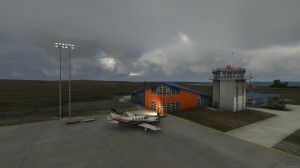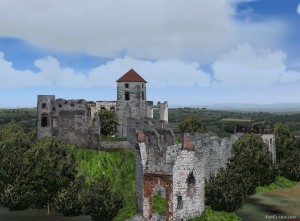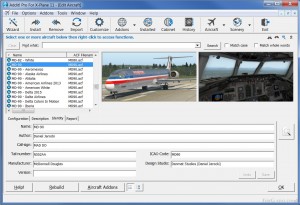Textures Only
CFS Macro DUKW CFS Version of a WWII ground vehicle. The DUKW (colloquially known as Duck) is a six-wheel-drive amphibious truck, designed by a partnership of Sparkman & Stephens and General Motors Corporation (GMC) during World War II. The DUKW prototype was built around the GMC ACKWX, a cab-over-engine (COE) version of the GMC CCKW six-wheel-drive military truck, with the addition of a watertight hull and a propeller. The final production design, perfected by a few engineers at Yellow Truck & Coach in Pontiac Michigan, was based on the CCKW. The vehicle was built by the GMC division of General Motors (which was still called Yellow Truck and Coach at the beginning of the war). It was powered by a GMC Straight-6 engine of 270 in (4. 416 L). The DUKW weighed 6. 5 tons empty and operated at
Show more... 50 miles per hour (80 km h) on road and 5. 5 knots (10. 2 km h; 6. 3 mph) on water. It was 31 feet (9. 4 m) long, 8 feet 2. 875 inches (2. 51 m) wide, 7 feet 1. 375 inches (2. 17 m) high with the folding-canvas top down and 8. 8 feet (2. 6 m) high with the top up. 21, 137 were manufactured. It was not an armored vehicle, being plated with sheet steel between 1 16 and 1 8 inches (1. 6 3. 2 mm) thick to minimize weight. A high capacity bilge pump system kept the DUKW afloat if the thin hull was breached by holes up to 2 inches (51 mm) in diameter. The DUKW was the first vehicle to allow the driver to vary the tire pressure from inside the cab, an accomplishment of Speirs device. The tires could be fully inflated for hard surfaces such as roads and less inflated for softer surfaces especially beach sand. This added to the DUKWs great versatility as an amphibious vehicle. This feature is now standard on many military vehicles. The DUKW was supplied to the US Army, US Marine Corps and Allied forces. 2, 000 were supplied to United Kingdom under the Lend-Lease software and 535 were acquired by Australian forces. 586 were supplied to the Soviet Union, and they would build their own version post war. The DUKW was used in landings in the Mediterranean, Pacific, on the D-Day beaches of Operation Husky, Normandy, but also during the Battle of the Scheldt, Operation Veritable and Operation Plunder. Its principal use was to ferry supplies from ship to shore, but it was used for other tasks, such as transporting wounded combatants to hospital ships or operations in flooded (polder) landscape. The US Army reactivated and deployed several hundred DUKWs at the outbreak of the Korean War. DUKWs were used extensively to bring supplies ashore during the Battle of Pusan Perimeter and in the amphibious landings at Inchon. DUKWs are still in use, as well as purpose-built amphibious tour buses, primarily as tourist transport in harbor and river cities. The first duck tour company was started in 1946 by Mel Flath in Wisconsin Dells, Wisconsin. The company is still in operation under the name Original Wisconsin Ducks. (Source. Wikipedia on-line) I have created this api macro with Easy Object Designer (EOD), Version 2. 0. 47 (Matthias Br ckner), to generate a static DUKW, used by US Army and Marines on WWII. Some textures are based on pictures availables on WWII Drawings site, mastered by Vincent Bourgui on, Rochefort (Belgium) and www. o5m6. de, Engines of the Red Army site. This macro was tested only in CFS1 sceneries, but I believe that can work without problems in CFS2-3 and FS2000-2002. All mine API macros, could be included on objects libraries with crash detection (for CFS missions), but must be distributed with the original API-MACRO copyright. Edmundo Abad Santiago-Chile October 2012
Show less...







